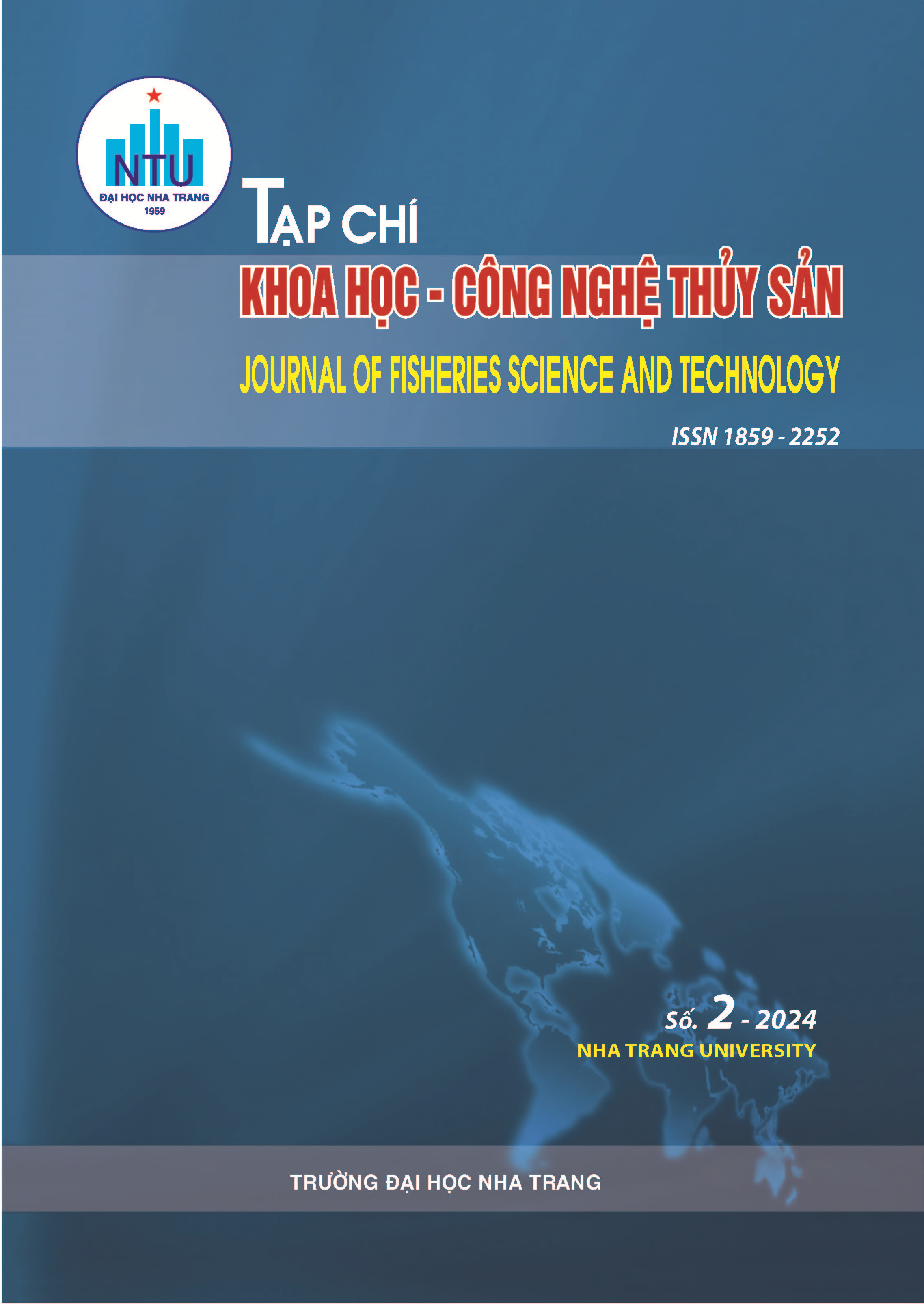##plugins.themes.huaf_theme.article.main##
Abstract
Tilapia fillets was deodorized in mixed solutions: 3% of brine + 0.3% of rice vinegar; 3% of brine; 3% of brine + 0.5% ginger, the best deodorized sample was then marinated with 4 recipes: sugar 8%, seasoning powder 0.5%, chili powder 6%, pepper 2%, ginger 3%, garlic 7%, salt ratio respectively: 4% (CT1), 3% (CT2), 2% (CT3), 1% (CT4)). Pre-drying was done with the best spiced sample using infrared radiation drying method - heat pump in 4 modes: temperature 50℃; wind speed: 1.5m/s; radiation yield: 129.4 w/m2 with drying time respectively: 120 minutes (CD1), 150 minutes (CD2), 180 minutes (CD3) and 210 minutes (CD4). The best pre-drying sample was then cooked by deep frying, microwave, oil-free frying, and infrared grilling. The best product quality was done in the process of deodorizing fish in a 3% brine solution; seasoned in spice mixture of salt 1%, sugar 8%, seasoning powder 0.5%, chili powder 6%, pepper 2%, ginger 3%, garlic 7% then pre-drying at 50℃/180 minutes with wind speed 1.5 m/s, radiation yield: 129.4 w/m2. Finally, the fish was cooked in an infrared oven (1st step: 50ºC/5 minutes, 2nd step: 125ºC/10 minutes). The results showed that sensory quality of the final product was good according to TCVN 3215-79, microbiological and physicochemical criteria meet the requirements according to TCVN 6175-1:2017.
Keywords: tilapia fillets, deodorization, marination, infrared radiation drying

